Words at work
– 5 min read
How to use ellipses in your writing
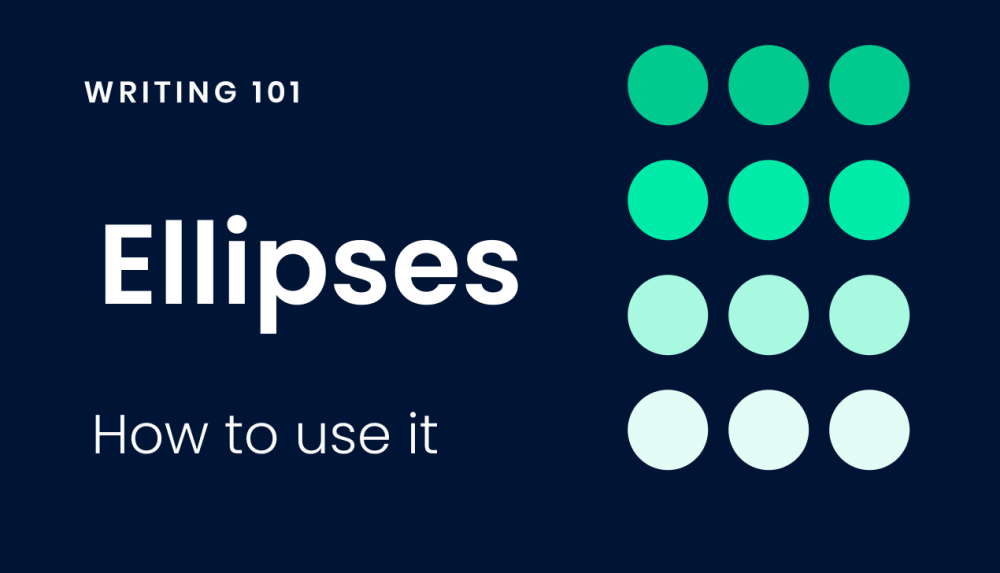
An ellipsis is a versatile punctuation mark. When used correctly, an ellipsis can elevate your writing by making it more succinct and impactful.
In this post, we’ll discuss what an ellipsis is, how many dots are needed, and examples to help you use ellipses in your writing.
What is an ellipsis?
The ellipsis, or ellipses in plural form, is a series of dots used to represent an omission of words. Casually referred to as the dot-dot-dot, an ellipsis can take the place of a word, sentence, or even an entire section of text without affecting the meaning of the content.
Think of an ellipsis as a punctuation mark that can be used to cut the fluff out of your writing. If the words or sentences are redundant or easy to understand from the context clues, you can swap them out for an ellipsis.
However, an ellipsis isn’t just used when you take out words from quoted text. An ellipsis can also represent a mood shift, thoughts trailing off, hesitation, pause, or suspense.
Here’s what an ellipsis looks like: “…”
But it can also look like this: “ . . . ”
So why the difference in spacing ellipses? Different writing style guides have different ellipsis spacing rules. The Chicago Manual of Style requires a space between each dot in the ellipsis. The AP Stylebook is a different story — it treats the ellipsis like a word in a sentence. That means there’s no space between the dots, but there is a space between the ellipsis and other words. And then there’s MLA Style, which calls for a space before each period and a space following the last period.
Refer to the style guide you reference for its rules on using an ellipsis. If you don’t follow a particular style guide or aren’t required to for your job, then you can pick whichever style works best for you. Whether you add spaces between the dots or not, just keep it consistent throughout the piece.
Does an ellipsis always mean 3 dots?
Yes, an ellipsis is made up of three dots. You’ll typically see it written this way. However, this isn’t always the case.
There is an instance when omitting quoted material that you would need four dots instead of three. If you omit two or more original sentences of a quote, then you’ll need to use four dots to represent the omission.
In another scenario, if you end a sentence with a period and add an ellipsis after the period, it’s going to look like four dots. Technically, you aren’t looking at a four-dot ellipsis, but a sentence like that would look deceptively like one.
Does this look like an ellipsis or a period with an ellipsis to you?
Example: “I’m John…. Mr. Doe was my father.”
It looks like it could be either. But the correct answer is: a period followed by an ellipsis. When the sentence you’re connecting the ellipsis to is grammatically correct, it still has to end with a period.
Typically, though, you’ll see three dots for an ellipsis. As a rule of thumb, stick with three dots in your writing to represent an ellipsis.
How do you use ellipses in a sentence?
An ellipsis can basically be used in two ways:
• As a replacement for an omitted word, sentence, or section.
• As a way to indicate hesitation, suspense, or trailing thoughts.
In this section, we’ll show examples of ellipses in action for both uses.
- An ellipsis as a replacement for an omitted word, sentence, or section:
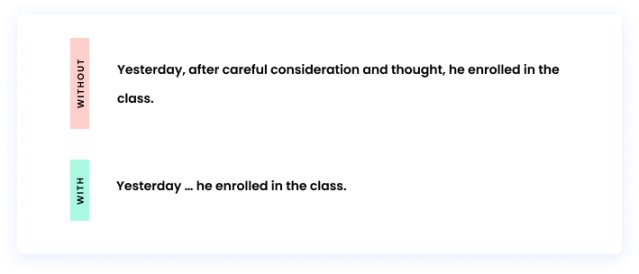
The ellipsis needs to be in place of the omitted word(s). In this case, the omitted words were “after careful consideration and thought.” This is right in the middle of the sentence, so the ellipsis that replaces the superfluous words goes right where the original words were.
- An ellipsis as a replacement for an omitted word, sentence, or section:
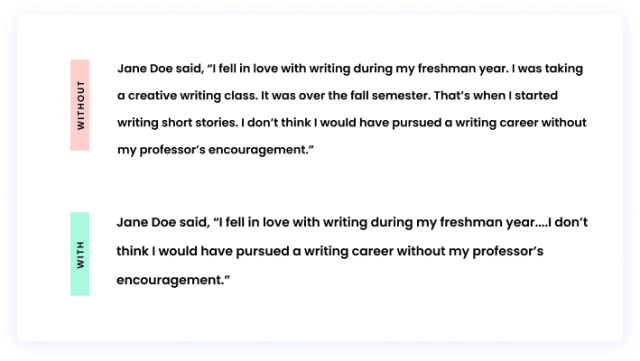
As mentioned above, there are few instances where four dots are necessary instead of the typical three for an ellipsis. Because two or more sentences were omitted from the quote, the ellipsis needs four dots in this case.
- An ellipsis as a replacement for an omitted word, sentence, or section:

This example is the same quote from Example 2, but this time we only omitted one sentence. Because we only omitted one sentence, we only need three dots to represent the omission.
- An ellipsis as a replacement for an omitted word, sentence, or section:
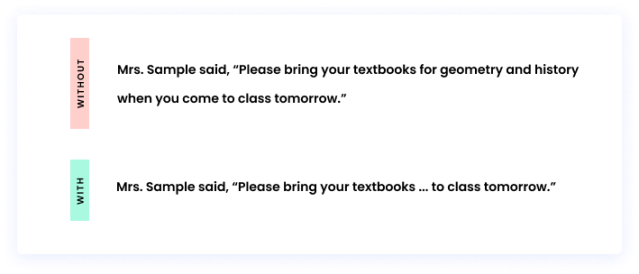
In this case, several words are omitted from the single sentence. They’re replaced with three dots. It’s worth noting that this would be correct with or without the spacing, so “textbooks…to” and “textbooks … to” are both acceptable depending on the style guide you use.
- An ellipsis used to indicate hesitation, suspense, or trailing thoughts:
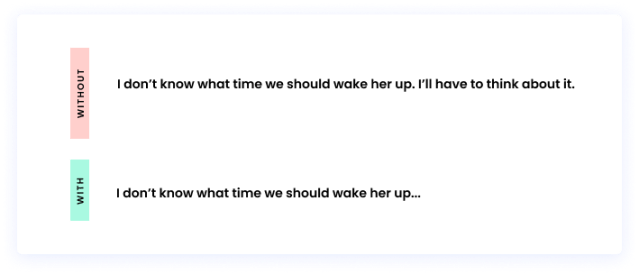
In this example, the ellipsis indicates a trailing thought. Ellipses used for trailing thoughts typically go at the end of a sentence.
- An ellipsis used to indicate hesitation, suspense, or trailing thoughts:
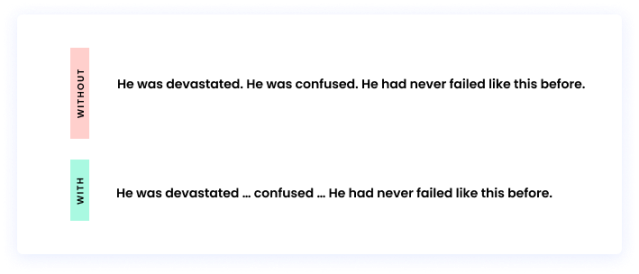
The ellipsis here is used to indicate suspense. It’s essentially a pause for effect.
***
Remember to check your brand’s style guide for specific ellipsis rules.
If you don’t follow a style guide for your writing, then you’re free to use spacing or leave it out. Just be consistent.
Looking for more ways to improve your writing? Start a free trial today to see the benefits of Writer.






